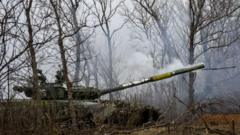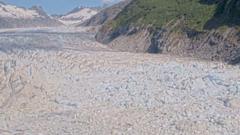The once-thriving population of common murres in Alaska has faced catastrophic decline due to climate-induced changes in their marine ecosystem. New findings released in the journal Science reveal that a severe marine heatwave, referred to as "the Blob," has led to the death of approximately four million common murres, constituting nearly half of the state's murre population.
The alarming drop in murre numbers became evident following the disappearance of these seabirds from their usual habitats, with 62,000 corpses reported from California to Alaska between 2015 and 2016. Researchers have since traced this die-off back to the impact of the marine heatwave, which disrupted a vast array of oceanic life, from plankton to larger species such as humpback whales, creating a ripple effect throughout the food chain.
Heather Renner, a supervisory wildlife biologist at the Alaska Maritime National Wildlife Refuge and one of the study's authors, stated, “What we learned was that it was just way worse than we thought.” The study confirms that the marine heatwave induced a collapse in the fish populations upon which the common murres depend, thus signifying a larger ecosystem crisis.
This extensive loss marks the largest documented die-off of any single species of bird or mammal, raising concerns not only for the future of common murres but also for other wildlife struggling to adapt to the rapidly changing climate. Scientists are urging for more awareness and action towards conserving marine ecosystems as the ramifications of global warming continue to unfold.






















